Here’s How to Identify Antique and Vintage Silverware, According to Experts
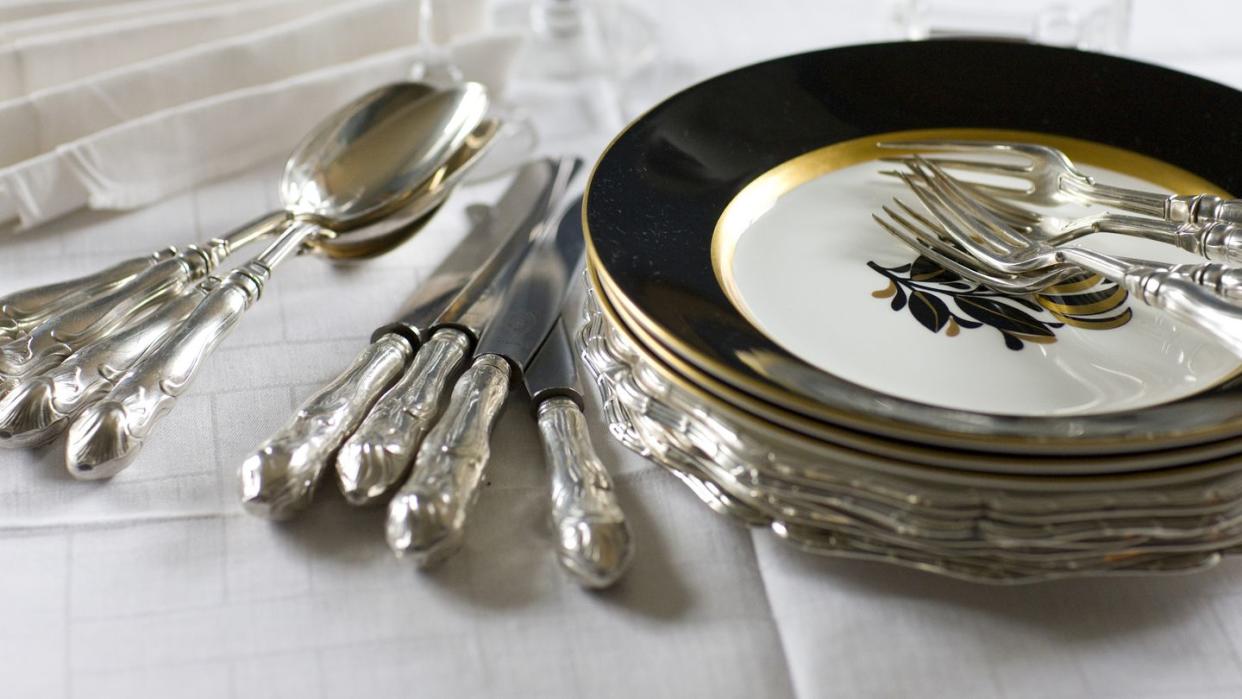
"Hearst Magazines and Yahoo may earn commission or revenue on some items through these links."
Whether you’re setting the table for two or having elaborate dinner parties throughout the holiday season, you can always count on silverware to add an elegant touch to your tablescape. However, while picking up some newer options from your local store is obviously an option, many designers opt for investing in vintage and antique silverware instead: Not only are these pieces often made with a higher percentage of silver than their contemporary counterparts, but their unique designs are difficult to find today. And after all, isn’t it so special to hold onto an item that you know has a story behind it?
“Silver is meant to be used, not stored away in a cabinet,” says Todd Sell, vice president and a silver specialist at Doyle Auction House in New York City. “I am a strong believer in utilizing silver every day, regardless of its age.” Yet, Sell notes that identifying authentic works and determining their periods can be largely challenging—especially if you don’t know what you’re looking for.
Here, his guide to identifying antique silverware.
How to Identify Antique Silverware
“We set a date of about 100 years old for the term antique, but for antique silver in particular, we might want to extend that back a little to say 1900,” says Sell. “Vintage silver is typically younger, 70 years or newer. With older silver, I’m thinking particularly of pieces from the 18th and early 19th centuries, and you can often see the handwork of the silversmith in the fine surface hammering, as well as the incredible engraving on heraldic arms and monograms.”
Sell notes that even though the 20th century saw an uptick in commercial silverware, “you also see some great silversmiths like Georg Jensen in Denmark and Buccellati in Italy creating beautiful pieces that still use traditional silversmithing techniques.” He adds, “When we’re talking about vintage, or modern silver, we tend to think of great 1930s or 1950s cocktail shakers, cigarette cases, and other pieces from the 20th century.”
Antique and vintage silverware can be a great addition to your collection, and mixing and matching styles can be a fun way to add visual interest your tablescape. However with so many options out there, there are several different methods of identifying vintage and antique silverware. Below are some common antique and vintage styles and patterns to be aware of, according to the experts, so you can start building your collection from the ground up.
Types of Antique and Vintage Silverware
Baroque (1600-1750)
Originating during the early 1600s in Rome, the Baroque period is considered to have been a reaction against its more rigid Renaissance predecessor, so Baroque silverware is characterized by relaxed, extravagant looks: flowing lines, floral motifs, and an obsession with symmetry. Weighty sterling silver pieces with hints of gold are the major hallmarks of this period, and they’re definitely more lavish pieces, says Doyle.
Common Baroque patterns include Puiforcat, which consists of flowing scroll motifs; Demitasse, which features crisp flower and leaf designs in perfect symmetry; and Royal Oak, which utilizes acorns and large oak leaves at the center of the design.
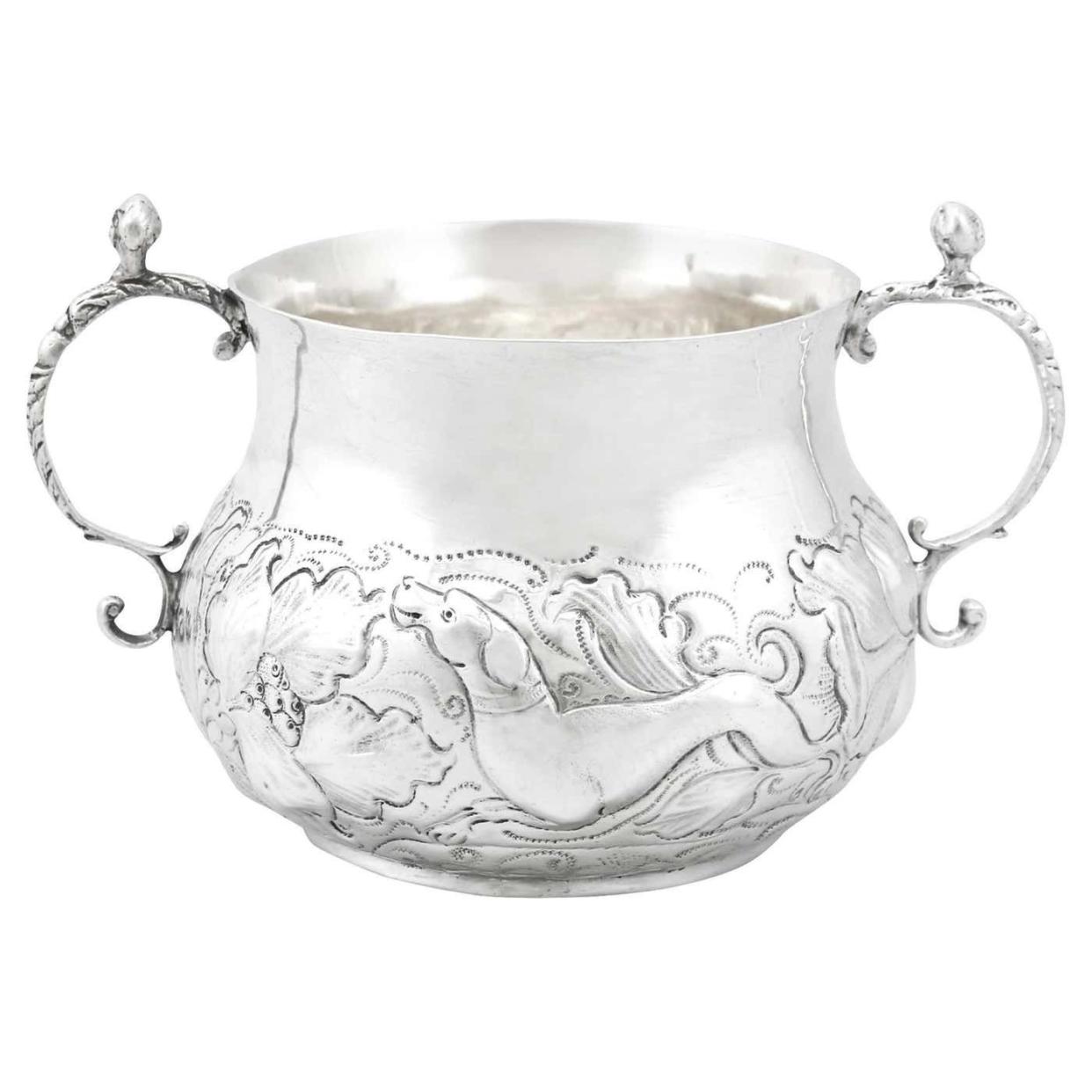
Antique Sterling Silver Porringer
1stdibs.com
$8436.84
Neoclassical (1760-1830)
Reminiscent of the antiquities in Greek and Roman cultures, Neoclassical styles use classical motifs that are more subdued in style—ribbon-tied festoons, palm leaves and hanging garlands were all popular and used frequentlyduring this period.
Common patterns include the Adam style, characterized by Roman decorative motifs, swags, ribbons, and vase shapes; the Percier pattern, with leaf-edged borders and anthemions; and the Feather Edge, which features a multitude of feather patterns at the tip of the flatware.
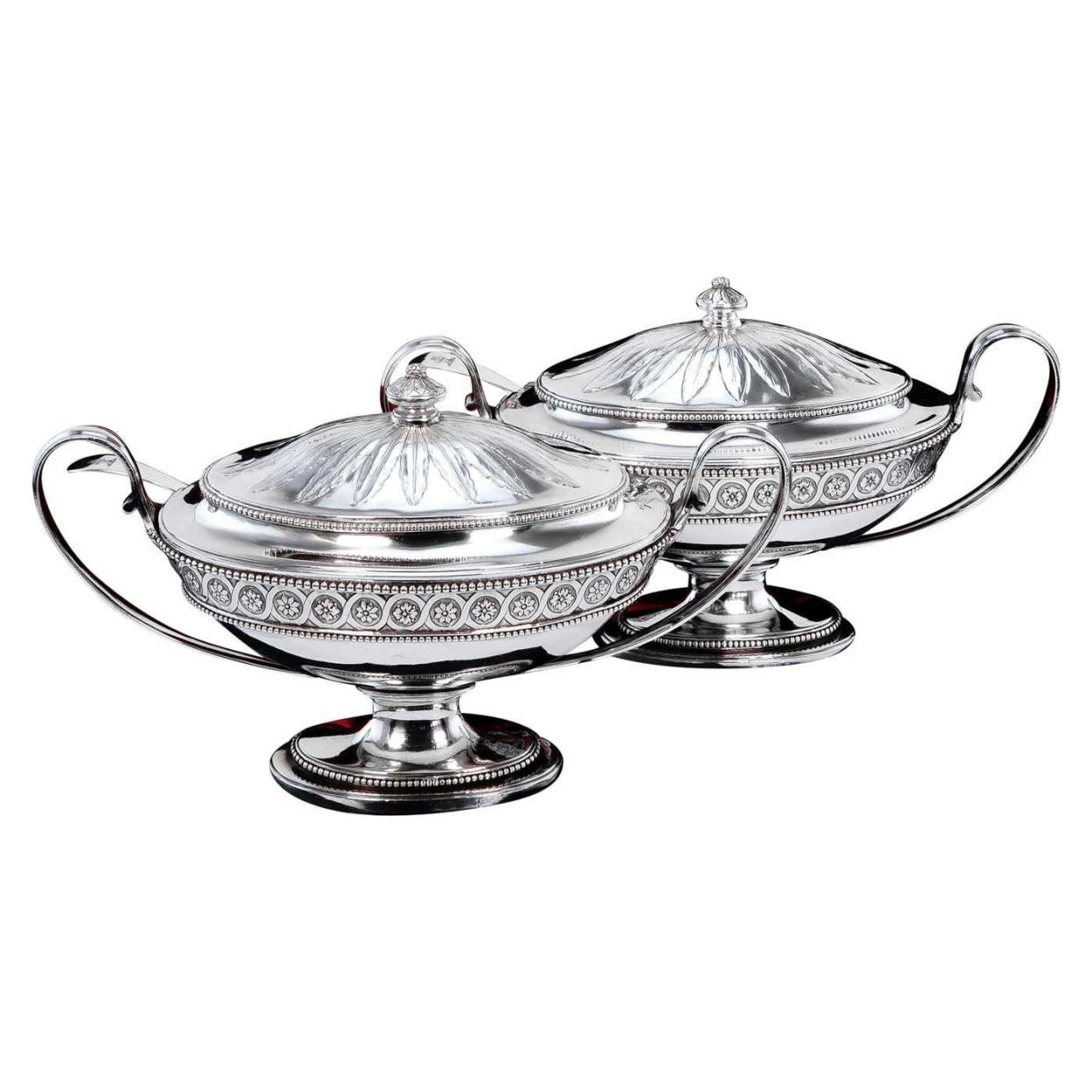
Antique Georgian Solid Sterling Silver Tureens Neoclassical Style
1stdibs.com
$9667.88
Victorian Floral (1837-1901)
According to Sotheby’s Senior Vice President and Head of Silver and Vertu Department, John Ward, this is the style that most people think of when they think of antique silverware: “Grandma, very ornate and floral, and hard to clean!” he says. But this isn’t to say these pieces don’t have merit. Since they weren’t as mass-produced as the silverware of later years, they have a more weighty feel about them, according to Ward, and they also come in a huge variety of hand-crafted styles.
Common patterns of this period include the Reed and Barton Majestic pattern, consisting of carved lines on the handles suggesting Greek columns and their adorning blooms; the Frank Whiting George III pattern that was a favorite of that time, consisting of decorative elements such as leaves, claws, and shells; and the most classic of them all, the Towle Georgian pattern, which boasts a floral, intricate rose design that’s hard to find in pieces today.
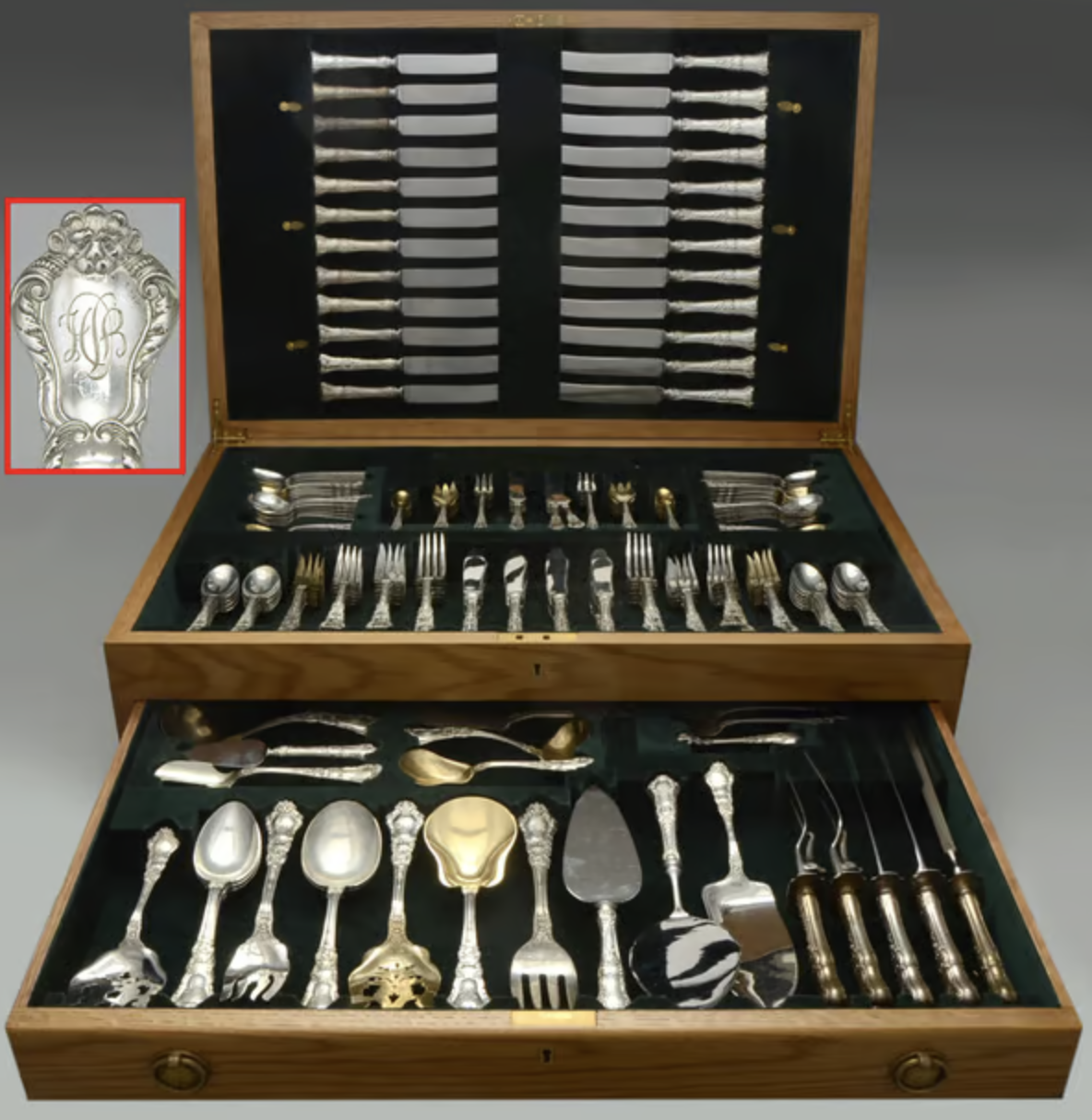
231 Piece Estate Set
replacements.com
$19999.00
Colonial Revival (1880-1940)
Characterized by simple, clean design, Colonial Revival silverware was produced in America to keep up with demand. “There was a lot of money in America in the 1920s, and a lot of silver made with clean lines, mainly Colonial Revival, which was created so that people could purchase weighty silverware that could be used daily; not just special occasions,” says Ward. They were designed for everyday wear, and so they didn’t have the grand designs of prior decades.
Some common Colonial Revival patterns are Oneida Colonial Boston, featuring a concave shank as its sole ornamentation; Grand Colonial by Wallace, consisting of a sculptured fiddle shape; and Castillian by Tiffany and Co., which has a heavy, curved edge with a geometric square pattern.
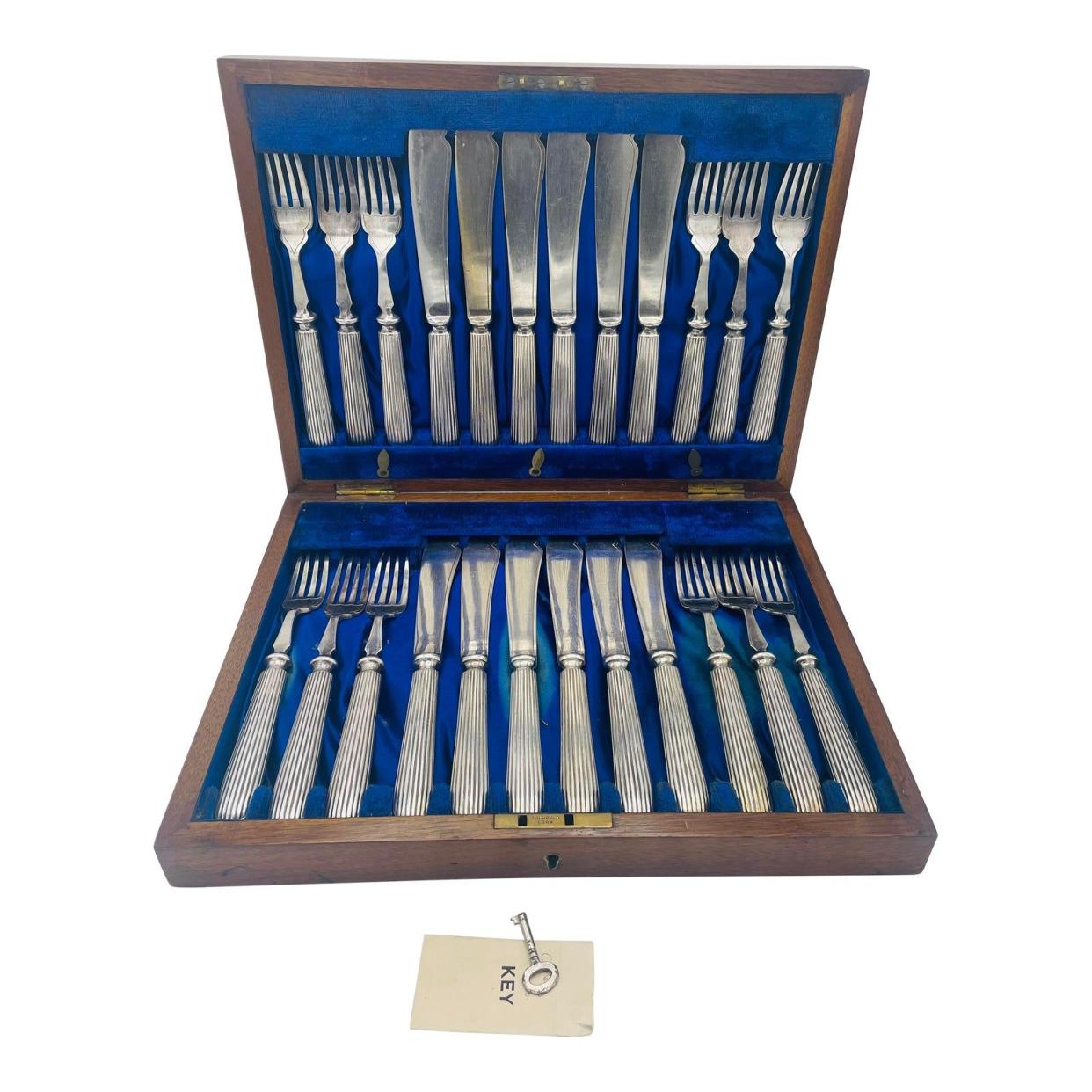
Antique Silverware Fish Set 12 Place Setting
chairish.com
$275.00
Art Nouveau (1870-1900)
According to Doyle, the Art Nouveau style is all about unique, asymmetrical looks (think: curved stems, deep bowls, and motifs inspired by nature). If genuine, all these pieces are made with sterling silver, says Doyle, which means they’re weighter, more expensive and ultimately more valuable.
Some common examples of Art Nouveau styles include the Durgin New Art pattern, characterized by braided lily stems near the top that slowly move into narrower designs at the base; the Baker-Manchester Daffodil pattern, which uses flowing lines to create asymmetrical stems; and the Reed & Barton Francis, characterized by a thick, bumpy fruit and floral motif at the bottom of each piece of cutlery.

Art Nouveau/Jugenstil Sterling Flatware Set
1stdibs.com
$14500.00
Art Deco (1920-1930)
Soon after the Art Nouveau style came Art Deco, which goes a little more streamlined and symmetrical, with geometric and floral designs, as well as grooves. Most of the finishes are embossed or shiny, and many come with fun chrome and metal accents. While the previous Art Nouveau asymmetric lines exist, they simply are mirrored alongside one another or designed across the silverware to look more cohesive.
Famous Art Deco patterns to look out for include the Whiting Mandarin pattern, with curving lines in a more geometric arrangement; International Madrid Pattern, consisting of a raised silver thread with an etched edge; and the Coronation Hampton Court Pattern, which has symmetrical flower motifs with a horizontal base on each side.
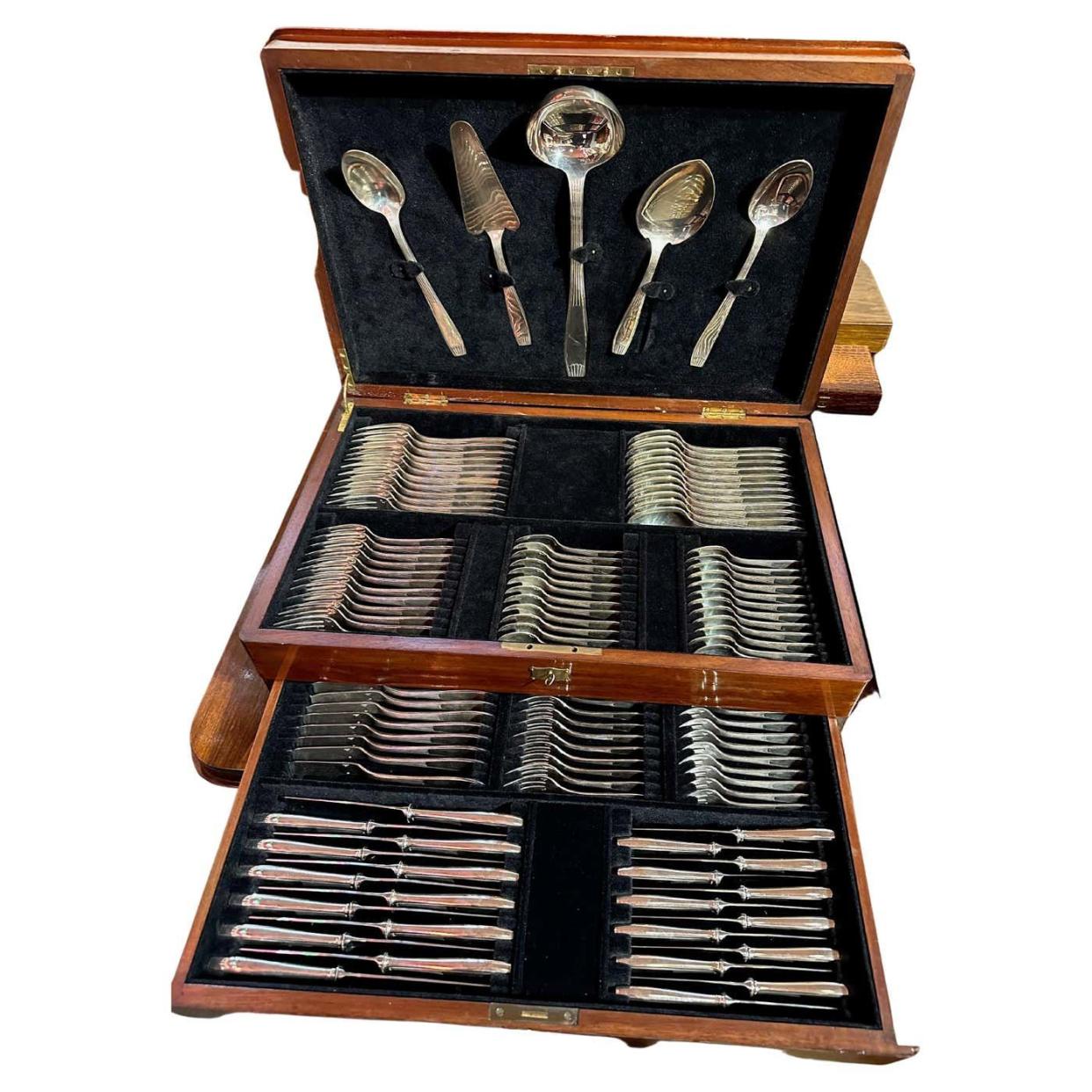
Complete Art Deco Silverware Service for 12 by Christofle
1stdibs.com
$7500.00
Mid-Century Modern (1940-1960)
With machine-cut silverware becoming the norm around the time of the second World War, Mid-Century Modern styles are characterized by geometric shapes (think: cut circles, squares, and hexagons on the handles). These machine-cut pieces look different from hand-cut silverware since they're more angular and uniform.
In terms of the shape of the silverware itself, you won’t have the curved edges found in other designs: These are much sharper. Popular Mid-Century Modern patterns include Diadem/R&B, characterized by small circles arranged horizontally at the base; Cameo, with accent scroll designs, and Napa Valley, which includes symmetrical squares and teak accents.
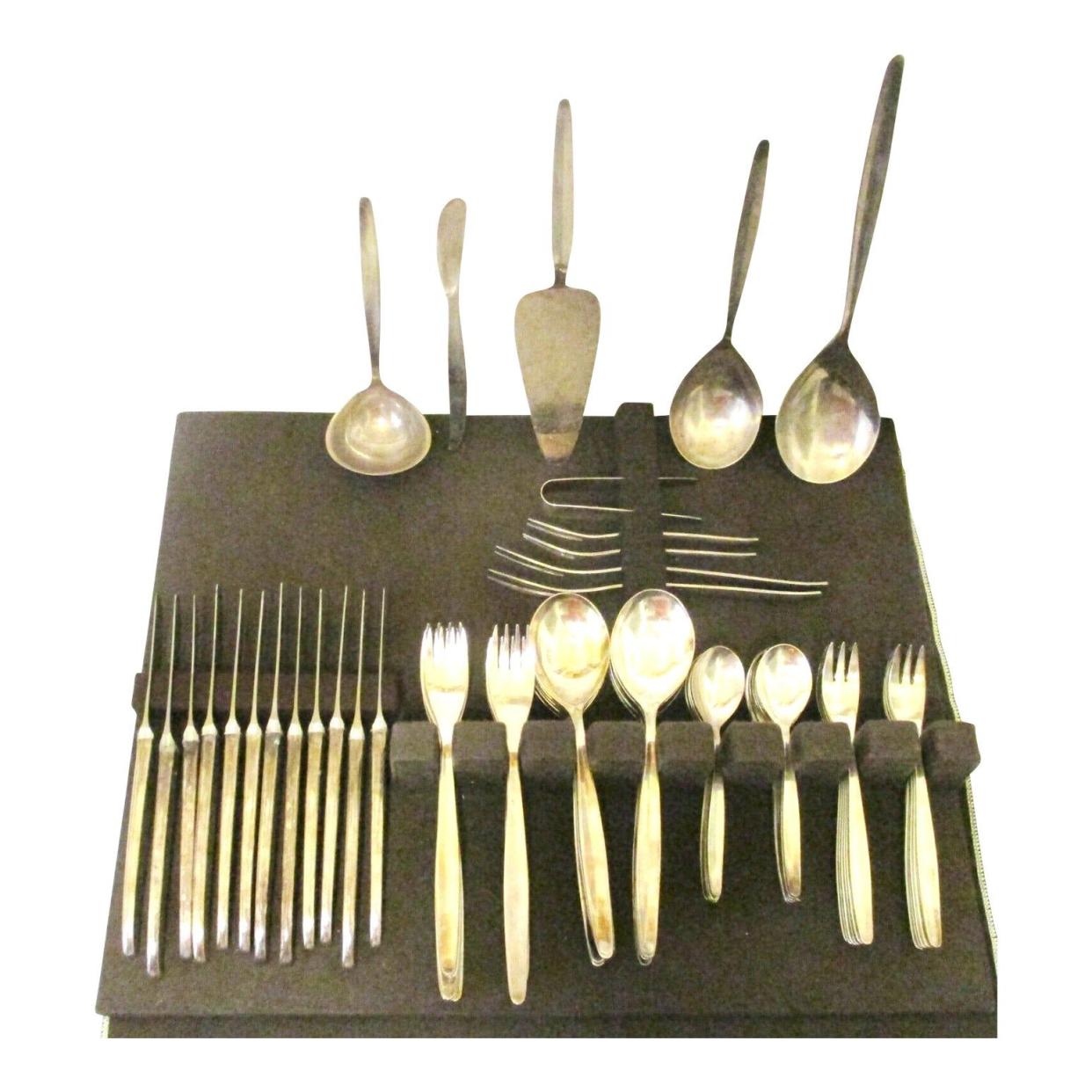
1950s 68-Piece Friodur Mid Century Silverplate Flatware Set With Serving Pieces
chairish.com
$340.00
Modernist (1950-1970)
Modernist styles mostly consist of newer, more eclectic patterns, and they are lighter and more affordable than sterling silver pieces that have a greater, weightier composition of silver to them. This is mostly due to rising costs and poverty levels after the second World War, which in turn also affected the silverware styles consumers were favoring at the time. Gone were the traditional floral and geometric motifs; they were instead replaced by sleek shapes that could be mass-produced with ease.
Some common modernist patterns are Diamond, with sleek lines at the center of the cutlery forming a diamond shape; Signet, with a breathtakingly beautiful narrow base; and Raindrop, allowing for a simple, curved edge at the handle mimicking (you guessed it), a small drop of water.
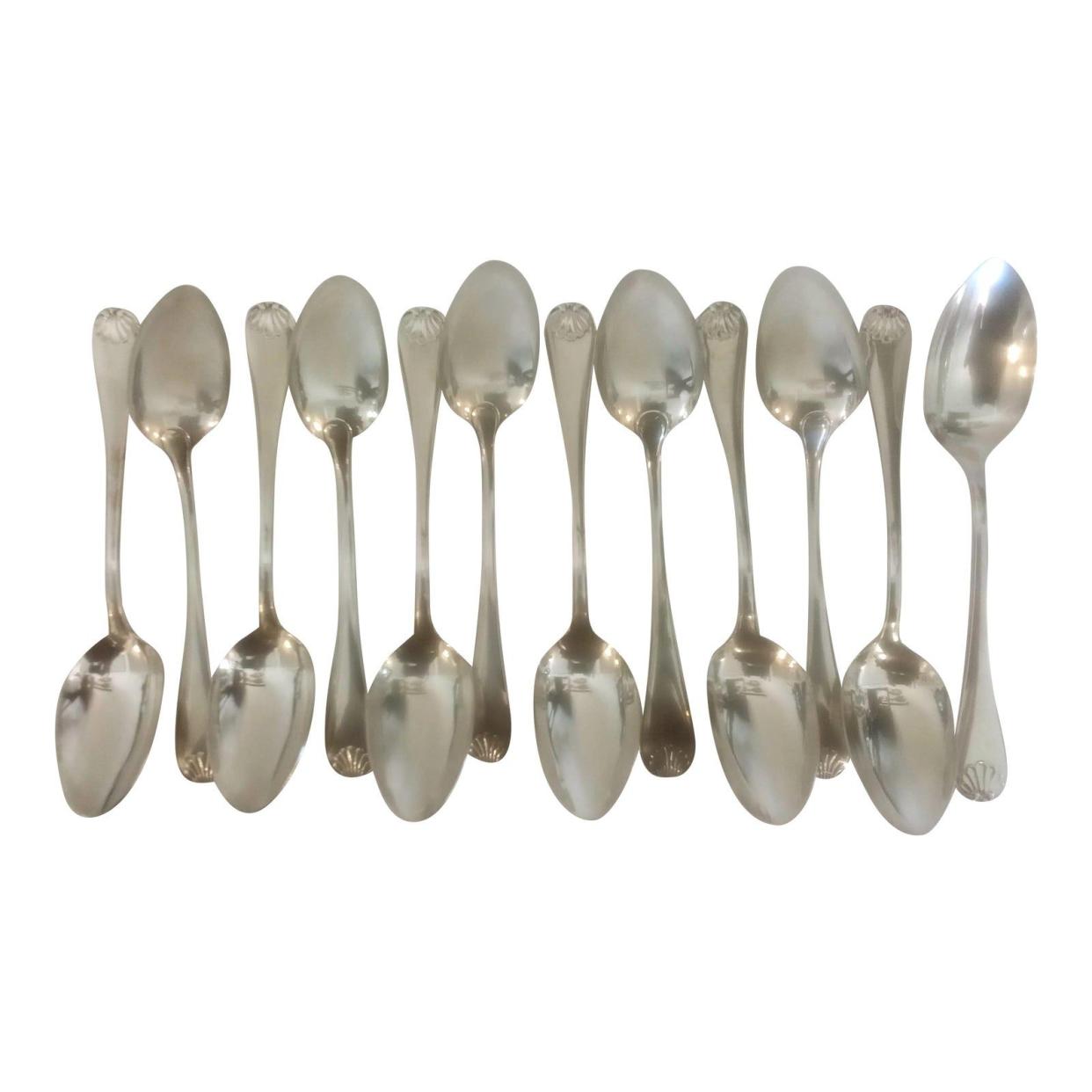
1960s Coffee Spoons in French Silverplate- Set of 12
chairish.com
$380.00
You Might Also Like
